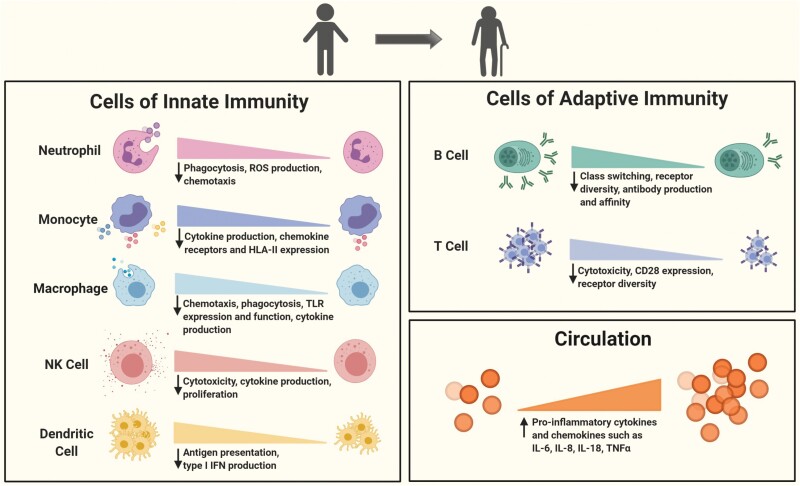Fig. 1.
Age-associated functional changes in the immune system. Both innate and adaptive immune systems undergo age-related alterations in terms of cell numbers and functions toward the later decades of human life. Multiple human and murine studies revealed that the cells of innate immunity such as neutrophils, monocytes, macrophages, dendritic cells and NK cells display impaired receptor expression, chemotaxis, phagocytosis, antigen presentation, cytotoxicity, ROS and cytokine production. Adaptive immune cells (B cells and T cells) experience shifts in sub-populations such as the depletion of naive cell pools and accumulation of late-differentiated effector and memory cells. Apart from those, both display reduced receptor diversity. Functionally, expression of the co-stimulatory molecule CD28 is critically diminished in T cells while B cells become weaker in class-switching and affinity maturation. Numbers of plasma cells and production of antibodies also decrease. Despite these functional down-regulations at the cellular level, levels of pro-inflammatory cytokines and chemokines are elevated in circulation with advancing age.

